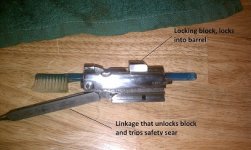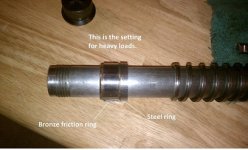I recently got an Auto 5, 16 gauge 3-shot, from a customer who said it had feeding problems. I checked it and found a couple of rough spots that I cleaned up. It now functions smoothly, but has another problem.
Now, it feeds well and ejects well, except for the last shot. It won't eject the last empty and stay open. The empty case is re-chambered and action closed. If only one round is loaded, it won't eject it either.
I've checked the friction ring positions and tried the ring at the rear and in both directions without success.
Any suggestions?
Now, it feeds well and ejects well, except for the last shot. It won't eject the last empty and stay open. The empty case is re-chambered and action closed. If only one round is loaded, it won't eject it either.
I've checked the friction ring positions and tried the ring at the rear and in both directions without success.
Any suggestions?



